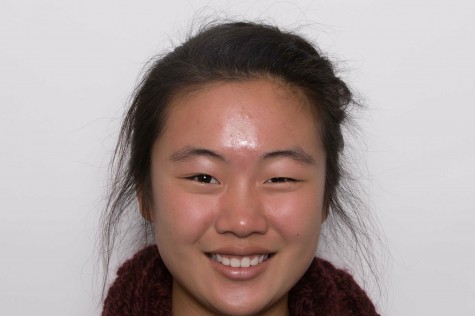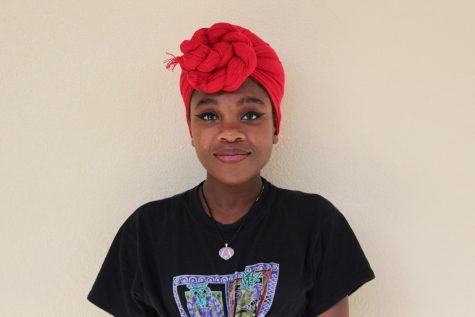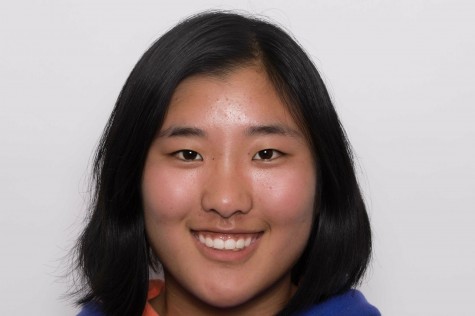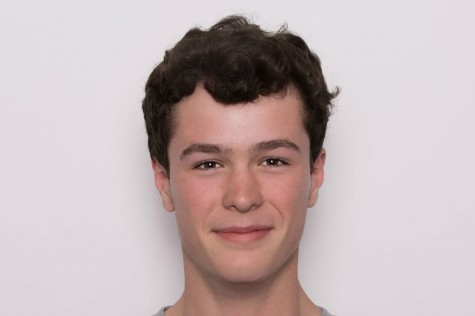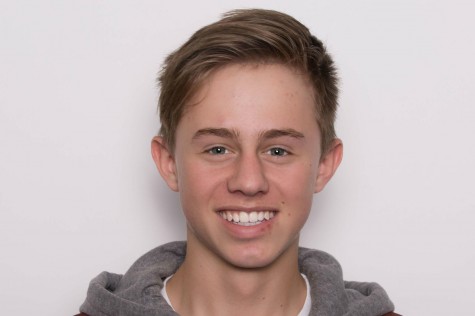The Influence
Teaching young people about drugs is not precise: however individualized the curriculum, it will never be enough to account for the diversity of young people. A high school student who is intent on using drugs will not likely be discouraged by a health class or a student newspaper. And despite being informed by parents and teachers about the perils of drugs, some students are still intent on trying them.
However it is important to remember that a large population of the student body chooses to abstain from drugs completely. Regardless of where you fall on the legitimacy of this decision, surely we should equip young people with the knowledge to experiment safely, should they decide against what they’ve been told.
THE LINE
So, the online health programs, based on the state and federal health standards, used by many high school students are flawed. They tend to present drug use as a binary oversimplification: students either completely abstain or risk becoming addicts. This is ineffective because it’s unrealistic. The truth is that the significant majority of students who try marijuana or sip alcohol are completely fine, and students know it.
However, the health curriculum cannot encourage students to experiment with drugs because doing so is illegal and dangerous; presenting illicit substance consumption as “acceptable” validates students who are at risk of overusing, and harming themselves in the process. It’s counterproductive and potentially harmful to promote safe drug use because it inherently promotes drug use in general.
So health class is put in a difficult position: it shouldn’t tell students to abstain, and it shouldn’t tell students to experiment.
Currently, drug education defines a line that students should not cross, and teaches up to that point. For example, if the health curriculum took the position that experimentation was okay, then it would need to teach about responsible drug consumption and practice. The conventional philosophy in effect today is that all drug use is condemned, and that health education should match that view.
But this is a problem when students cross the line. A student who decides to experiment finds himself blind, with no concrete knowledge of his own limits. For instance, there are cases of freshman college students attending their first parties and dying of alcohol poisoning as they struggle to adapt to a new culture. Relaxing the way we view underage drinking would perhaps solve this problem, but simultaneously creates a new one — if the school tempers its perspective, it’s likely that more students would try drugs. The general issue pits quantity against severity: is it better to have a few students harm themselves a lot, or more students harm themselves less?
Any authoritative figure, especially at this school, would surely tell you that they prefer the latter. Nothing is more important than the lives of the students who pass through this system. But encouraging responsible drug use simply isn’t possible; beyond the fact that these drugs are illegal, there’s a solid body of research pointing to the correlation between underage substance consumption and long-term brain damage.
But the iron-clad approach we take to drug education now just isn’t realistic, and often causes an overreaction of student distrust. If the truth about drug use taught in health classes conflicts with the truth talked about by peers, then the truth starts to seem less like truth and more like an agenda.
We live in one of the most liberal areas in the world, where calls for the legality of marijuana swirl with the political demand to free prisoners convicted of marijuana possession. The way we’re taught about drugs is at a disconnect with this cultural background.
Students aren’t given enough intellectual credit for their perception of this impossible divide; they know that the truth about drug use exists somewhere outside the extremes of total abstinence and overdose scare tactics. The fundamental problem is that once they recognize that the over-exaggerations of conventional health class aren’t realistic, students tend to disregard other, more important sub-lessons of those same classes.
It’s worth mentioning that the less popular, in-class health taught at Los Altos is in many ways a much more balanced alternative. Health teacher Vickie Christensen doesn’t subscribe to the dismally severe approach to the issues of addiction and abstinence, and instead opts for a more realistic, applicable and open curriculum.
“I don’t believe in scare tactics,” Christensen said. “And I always tell students, ‘If you do do drugs, you probably won’t die.’ That’s not it. You’ll survive. And not everyone becomes addicted. But some people do.”
THE PROBLEM OF CHOICE
Individual differences further complicate the problem. There are many factors that influence how someone will react to drugs: family history, upbringing, environment, friends and so on. Generalizing young people creates a health curriculum that is tailored for every student without genuinely reaching any student. The choices that students make during their formative high school years are so diverse and individualized that the existence of a drug curriculum that can simultaneously convince the social user and the borderline addict to abstain from drugs is difficult.
So, if we acknowledge that a hardline drug education program isn’t practical, and a relaxed program isn’t safe, then what line do we draw? When does someone go from being a safe user to being negatively affected? How much is too much?
It’s hard to tell. The decision to use or not use drugs is steadfastly personal; it’s hard to compartmentalize as right or wrong. But thinking about how drug use interferes with a person’s life gives us a vocabulary for examining the line between safe experimentation and dangerous usage. Yet the isolation of this choice to use drugs creates far more questions than definitive answers. In a search for answers, The Talon interviewed students on campus about their experience with drug use. All names have been modified to protect the students’ identities.
STUDENT PERSPECTIVES: EMMA’S STORY
In senior Emma’s perspective, the current culture of drug use at the school is shrouded in normalcy.
“[Smoking marijuana] is fun,” Emma said. “It’s like going to the movies. It’s like going to the pool… It’s a thing you do.”
The illegality of taking drugs scared Emma when she first started high school. Rules existed for a reason, and crossing the legal boundary didn’t seem like an option to her. However, after hanging out with friends who did drugs without repercussions, Emma joined. Now she smokes marijuana and drinks alcohol, or what she calls “the basics.”
“As a freshman… I was pretty innocent,” Emma said. “[Now] I see people smoking in downtown Mountain View, and they just don’t care. So I guess I came to learn that… you can do whatever you want, it’s going to be OK.”
A particularly lax Silicon Valley culture on recreational drinking and smoking rationalizes drug use, despite threatening stories about addiction and life-damning psychological damage.
However, Emma belongs to a group of drug users at school who have never experienced the dangers of drugs. Emma is careful with her use and smokes and drinks socially. She only uses during weekends and never lets her habits interfere with sports, family or school obligations.
“[My parents] just think that I’m a 4.0 student who sometimes watches movies at friends’ houses,” Emma said. “[My drug use] has never gotten out of hand. In my case I only smoke with friends, so it’s always safe and it’s not super frequent… I guess you have to manage yourself.”
LILY’S STORY
For students like Emma, knowing how to manage their habits makes the high consistently enjoyable. The real danger prevails when students put themselves in situations that get out of hand.
Sophomore Lily smoked for the first time in seventh grade with a friend who eventually joined a gang. Later, Lily also started drinking alcohol and dabbling in cocaine and prescription Xanax pills.
“It was so easy [to get the drugs], so I was like, ‘Let’s try new things while we can, even though we knew in the future we had so much time,” Lily said. “It’s all available now [so we] just go for it, it doesn’t matter.”
This is where Lily’s story diverges from Emma’s. After breaking up with her boyfriend, Lily found herself spending time with an older high school student with access to drugs as a means to cope.
“I was heartbroken, [and] this guy was cool,” Lily said. “He had a car; he had drug connections, like bottle connections… It was probably dangerous…We picked up weed, we picked up a bottle and I drank a lot, on a school night too, and it was dumb and I smoked a blunt and I got really high and almost drunk. And even though I don’t normally get drunk, I was [messed] up and then he had sex with me and I was — I was unaware… I would have probably said no because it was too soon.”
Lily’s experience with intoxication and subsequent nonconsensual sex seems to constitute date rape, or a sexual assault by somebody known to the victim. While this article does not discuss rape in-depth, The Talon would like to remind readers that Lily’s description of her experience is neither normal nor acceptable. Any person who experiences rape is encouraged to report it to a trusted adult and the police.
Among underage drug users, experiences like Lily’s are infrequent. The Talon’s polling reported that 84 percent of high schoolers who use drugs have experiences closer to Emma’s, where their experimentation is safe, while only 15 percent of the students polled indicated that their drug use has had extreme effects on their lives, like it did on Lily’s.
It is important to see that Lily and Emma’s stories are two extremes that exist within a spectrum of experiences in our student body. They have both consciously chosen to participate in recreational use, but their differing experiences support the highly personal nature of using drugs. Their stories are one drop of anecdotal evidence, and the only sure takeaway is that students must educate themselves on the drugs they’re using. Understand your limits.
Lily’s dangerous past experiences spurred by drug use have motivated her to find a healthier balance between her social life and moral values. Above all, family, school and self-love come first.
“I’m trying to get [on] good terms with my parents before I ever think about having privileges and being sneaky about doing drugs again, because in the end it’s all just fun and games,” Lily said. “You gotta put your real priorities in the beginning… [Drugs] are just part of how you socialize. It should never intertwine with your identity.”
GABE’S STORY
For every student like Lily and Emma, there will be a narrative where perceived control over drugs still leads to rash decisions and lasting damage.
]unior Gabe was out drinking. It was a normal get-together at a friend’s house, and after playing drinking games over beers and an alcoholic energy drink called Four Loko, Gabe didn’t feel any more intoxicated than he usually would have. After a few drinks, he started wrestling with his friends.
“It kind of started out just play-wrestling and horsing around,” Gabe said, “We were kind of just tumbling around, and we started to lean against this old glass sliding door. It shattered and the shards didn’t really break very well… they came down and lacerated my back and punctured my lungs, diaphragm, bruised my kidney and tore through all my muscle.”
Maybe it was a freak accident, maybe it was the alcohol, but it only took a second for Gabe to put himself in life-threatening danger.
“That was a pretty scary experience, going through something so traumatic like near death,” Gabe said. “That makes you realize how fragile your life is, and sometimes it’s better not to go as hard as you usually would.”
Gabe’s story is not as clear-cut as Emma’s or Lily’s. For Emma, drugs are purely social and have not negatively impacted her life. For Lily, drugs caused a particularly dangerous experience. For Gabe, questioning whether his accident could have been prevented by staying sober becomes ambiguous.
“I don’t think you can just point to alcohol and say that’s it,” Gabe said. “It was kind of a freak accident and I definitely need to tone it down and take it easier. But overall before the incident, I already knew the risks and effects of what alcohol was doing to me, so I don’t necessarily think [the accident] will change [my drinking habits] that much.”
The fact that Gabe’s night of social drinking took a nightmarish turn is telling. Even the most experienced users expose themselves to danger every time they do drugs. Knowing when to stop is key, but drugs are only catalysts. Sometimes, nothing bad happens. But when things go wrong, the root of the problem is nuanced. Every situation will be a little different, and making a distinction between danger and chance assigns necessary responsibility to the user’s future choices.
A FLEXIBLE LINE
It is important to remember that the effects of drugs have a negative effect on mental and physical health; no matter how you view drugs, the damage that alcohol has on the development of adolescent brain tissue is sobering. Research on other substances is less conclusive, but not promising — it’s safe to say that sobriety will always lead to an objectively healthier life.
Some students know this, but continue to use drugs. The following guidance is not meant to normalize or encourage experimentation.
The stories of Emma, Lily and Gabe are related only by the illicit substances that they mention; in all other details, their experiences diverge. The individual nature of these stories indicates that student drug use should be treated in a similar way.
We’ve already established that the existence of a hard line that defines health education is impractical. So, instead, the goal is to create an individual, tailored line. The only person capable of creating that line is you.
The limits of drug use depend on personal values, a person’s family history and the relationships that matter to each unique student. If substance use begins to negatively interfere with your life, you should stop. The question is a matter of prioritizing values — is a brief high worth long-term, or even short-term, interpersonal damage?
“I have seen friends who start doing [drugs] on their own… and their whole life revolves around it,” Emma said. “They’re not fun to be around anymore. I guess that’s what they’re warning you about in health class.”
THE ROLE OF HEALTH CLASS IN CAMPUS CULTURE
The truth is that students are most receptive to information that comes from the people they trust. The scare tactics and staunch abstinence authorities in current health standards do not foster the necessary relationship between students and the curriculum.
“If you want to do drugs, the health curriculum is not going to do anything to sway your opinion,” Emma said. “It’s really your personal thing. The classes are not going to be the thing that makes you change your mind.”
Health class must continue to spark important conversations about drug usage once the course is over; it should guide student conversation and foster a culture where safe drug use is openly discussed among trusted adults and peers. Maybe this ideal requires reforming the drug curriculum, replacing lectures with socratic seminars in which students are not afraid to share their own experiences and concerns about drugs. It means teaching students how to define their own limits in the context of their own personal values. And, ultimately, it means talking about drugs honestly.
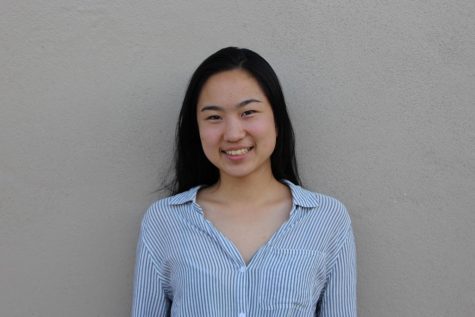
5'4". Black hair. Actually a lizard. When she think's no one's watching, spends time calling dogs pretty, watches videos about garlic bread in space...




